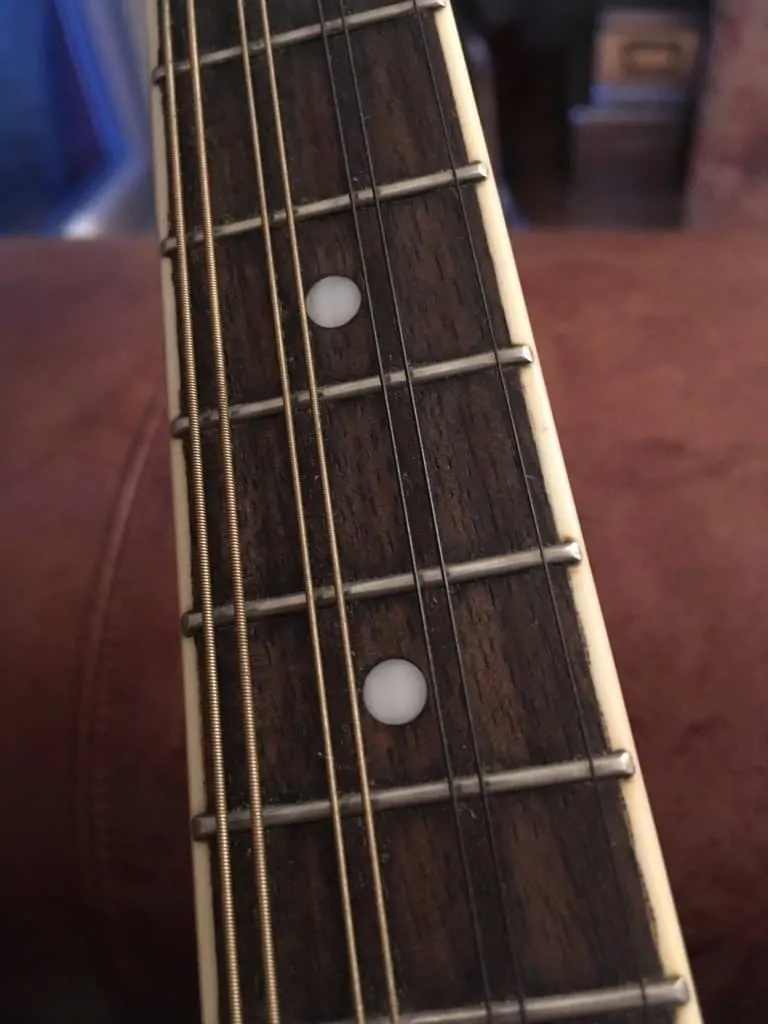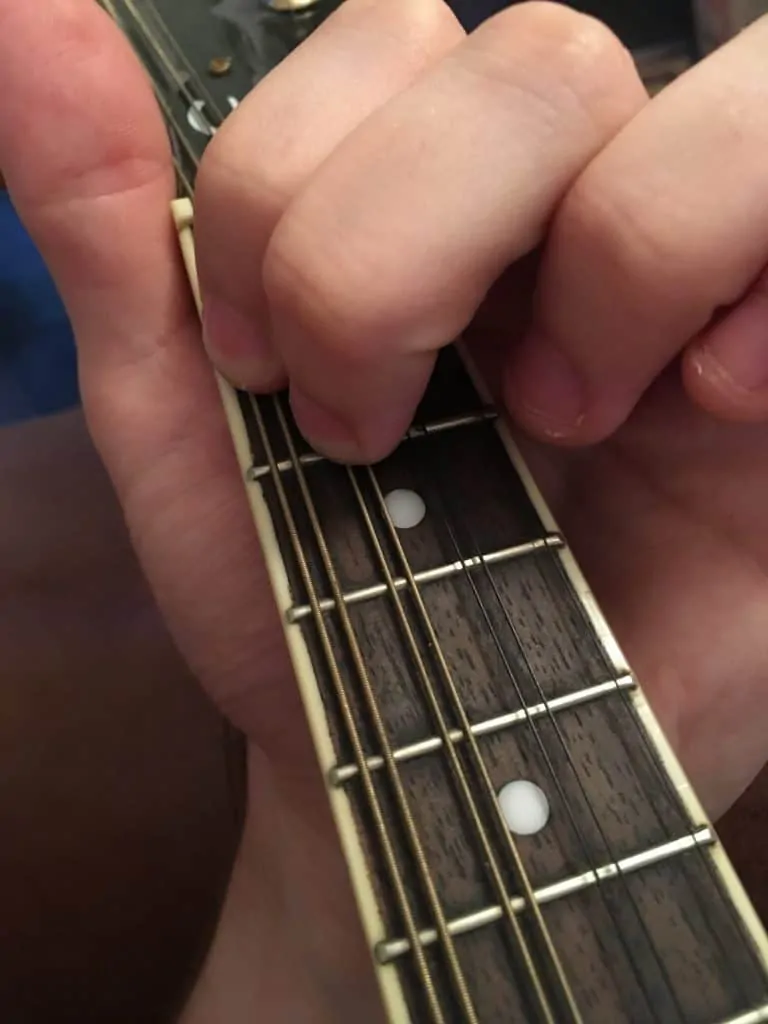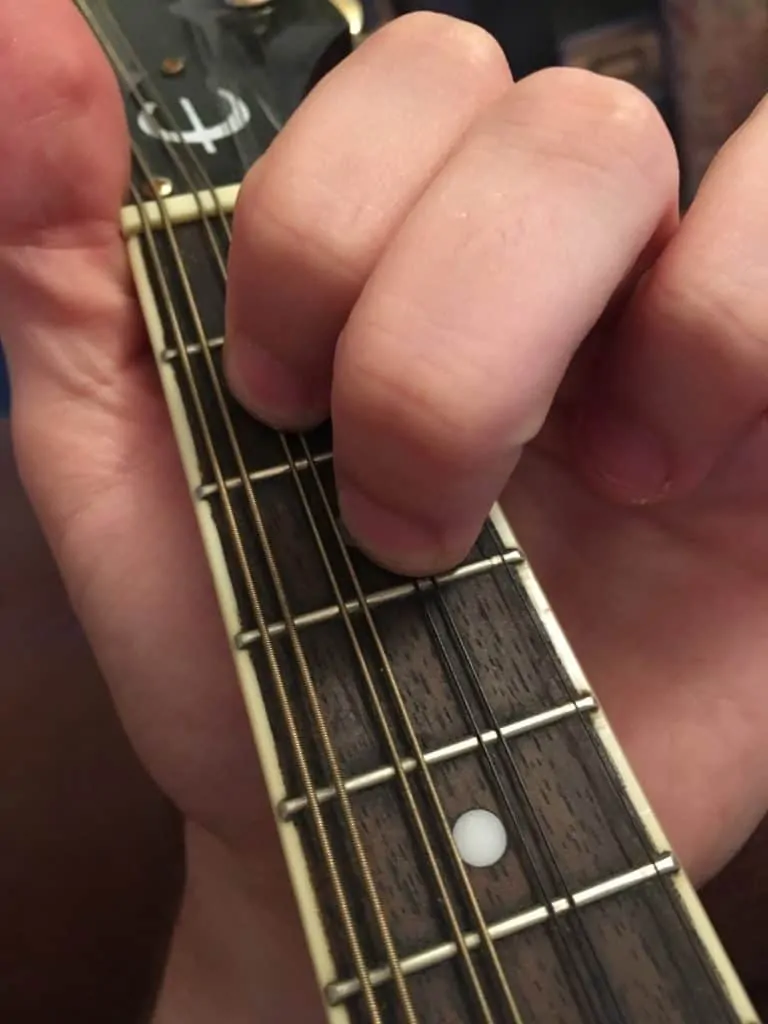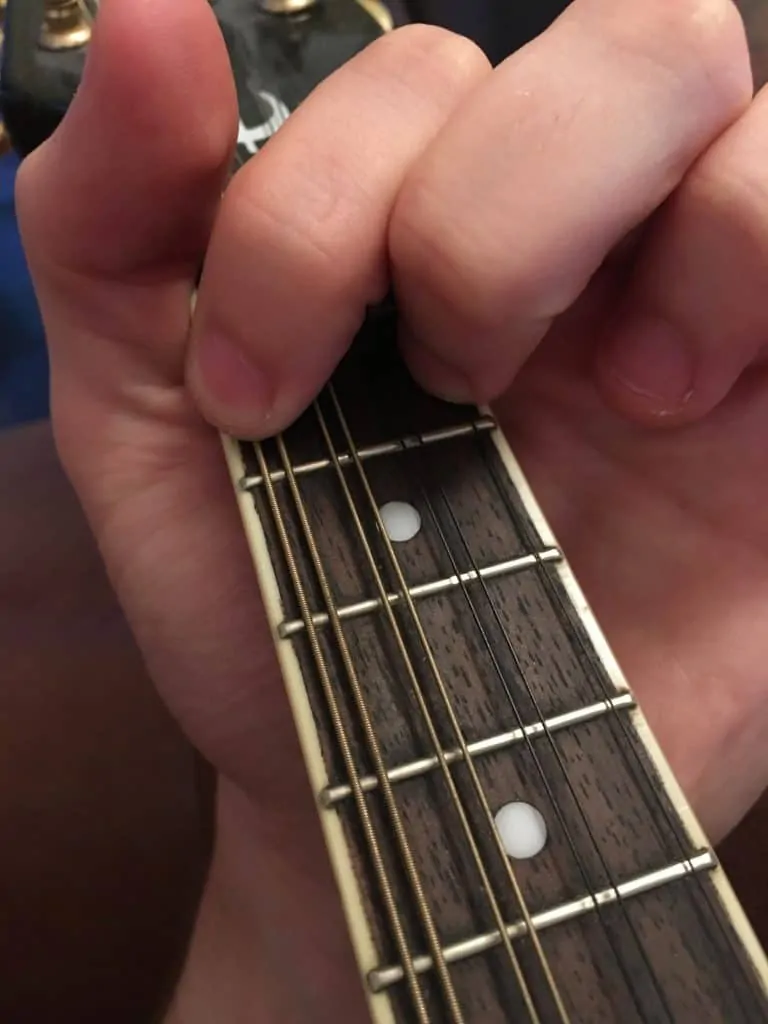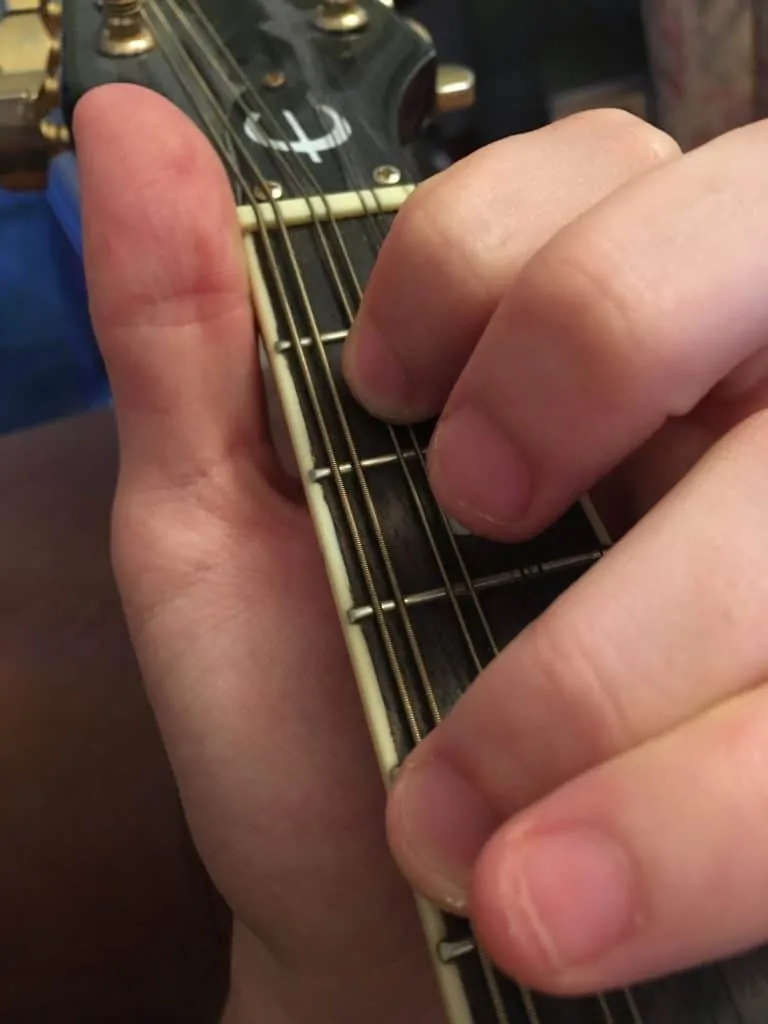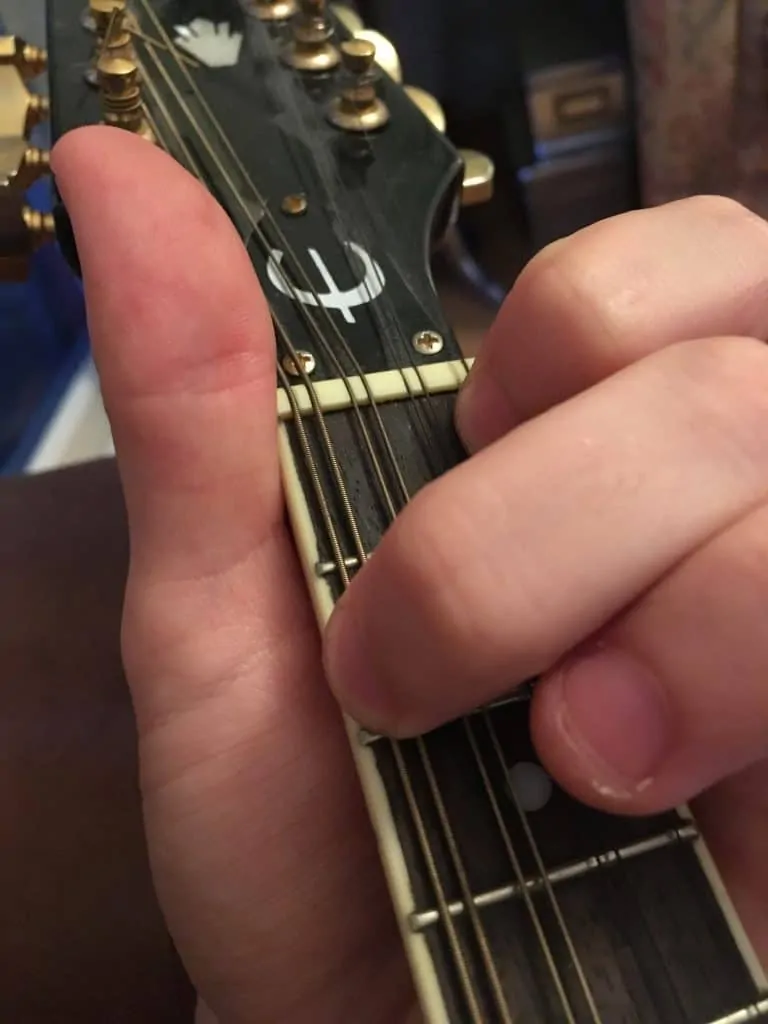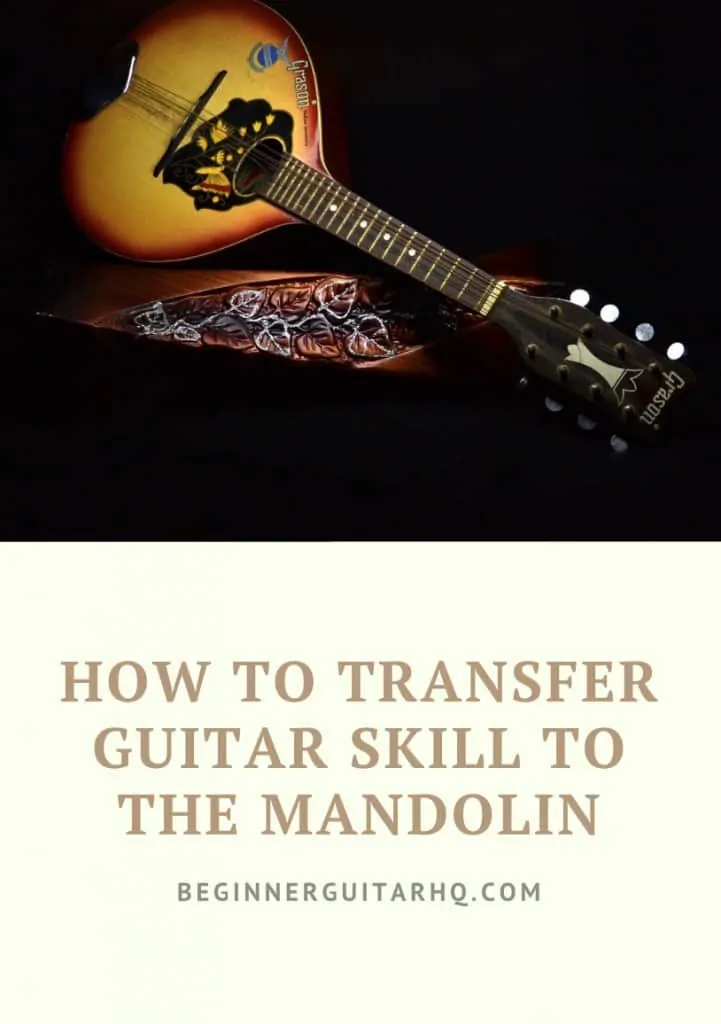Stringed instruments are everywhere, and if you can already play the guitar (if you can’t, use our many guides here at BeginnerGuitarHQ to learn how) then there is a pretty high chance you’ll be able to use what you already know to pick up one of these other instruments.
In this important guide, I’ll help you get a nice head start on learning to play the mandolin.
If you’re looking for a place to start with the mandolin, then look no further…
Contents
What Are The Big Differences Between A Guitar And A Mandolin?
The first thing you’ll probably notice is that they look pretty different. A mandolin is much smaller, (often) rounder, and you’ll typically see them a lot less frequently. They very rarely front a rock band like an electric guitar often will, but in country, bluegrass and folk music, a mandolin is a key player. Of course, at the same time, they’re still a stringed instrument with frets and no bow- this means you’ll be able to take your grasp of electric guitar over to the mandolin.
Strings: While a standard guitar has 6 strings, you’ll notice a mandolin has 4…. sort of. While it has 4 sets of strings, and therefore 4 playable, open strings. We’ll get to that in a moment. For now, you can imagine we are dealing with a 4-stringed instrument not unlike the bass guitar. This brings a few challenges, mostly in getting used to the idea of making chords that only cover 4 strings, rather than 6. However, it is the idea of double strings that often causes the most fear when moving towards the mandolins. Honestly, you don’t notice as much as you’d think. As mandolin strings are thinner anyway, doubling them takes them to a thickness not too much greater than a guitar, plus they’re so close together that they basically feel like one string when playing anyway. Don’t worry about getting your pick (or finger) caught between the two, because it’s actually harder to do that than avoid it.
The Size: While a bass is much bigger than an electric guitar, a mandolin is much smaller in basically every way. As mentioned above, the thinner strings don’t cause much of a problem as they’re doubled up anyway, but the neck is considerably smaller. I’m not sure if you’ve ever tried to wrap your entire hand around a guitar neck, but it’s quite hard to do- on a mandolin it’s really quite easy. Make sure you’re aware of this, as it’ll mean your fretting hand has to get used to an entirely new positioning. The thin neck is also a lot easier to break than a guitar neck. Also, the main body of the mandolin is much smaller, so you’ve got a lot less surface area to rest your strumming/picking hand, while the tuning pegs are also smaller, but more compact. Finally, you’ll have to get used to the idea that some frets on the mandolin just weren’t made to be reached. Those miniscule frets that sit smugly all the way at the end of the instrument aren’t going to be played by anything other than a perfectly placed fingernail.
Holding A Mandolin: Many mandolins have no strap. As they’re so small and light, this sort of makes sense, but when you’re a guitarist trying to branch out (like me) this often causes issues when you expect a strap to be holding your instrument up. For a while, I simply sat down as though I was playing classical guitar. It works, but it looks terrible. What you should aim to do, is tuck the bottom of the body into your strumming arm, then angle the neck of the mandolin about 90 degrees more upright than you would a guitar. You don’t want it pointing at the sky, but you also don’t want it to be jutting out sideways like a guitar. It takes a while to get used to having no strap, but it isn’t unheard of to just create your own strap for the instrument. Or just buy one with a strap. They exist.
Best Mandolin
Obviously, as with guitars, there are hundreds of mandolins available to suit all sorts of tones, styles, looks and budgets. I’ve taken a look at a lot of the mandolins on offer, and I’ve put together this list of five of the best, based on sound, place in history, look, budget and all-rounder.
Best Sound: Ozark 2001 Portuguese Style. In my opinion, these full bodied, fatter mandolins always give the best sound. This one in particular, is full made of wood (the back and sides are made of maple, and spruce makes up the high quality soundboard) to avoid the manufactured, fake sound, instead providing a nice, natural tone. On top of that, its individual central sound hole gives a bassy, thick texture that allows its playing to cut through a mix rather than fight to get through like many other acoustic mandolins have to do.
Most Historically Important: Dudenbostel #5. If you’re getting into mandolin, you’re probably away of Chris Thile, arguably the greatest mandolin player in history and definitely the reason I began playing. Most of his career has seen him play mandolins built by Lynn Dudenbostel, with the #5 being sold in place of a #14 in 2001 and then bought back because he liked it so much. If the world’s greatest mandolin player is happy to call this his main instrument, then it must be good. Just don’t expect to ever be able to get it yourself…
Best Looking: Stagg M50E Electro-Acoustic Bluegrass. With its shimmering red finish, beautifully curved sound holes and merge of traditional/modern design, this mandolin is my favourite to look at. It’s also electro-acoustic, meaning you can take it on stage and have people stare at it with ease, while its relatively affordable price actually makes it quite a good one for a beginner to choose.
Most Budget-Friendly: Rocket MAB01 Traditional Bluegrass. As the cheapest mandolin Amazon offers, you may be suspicious of this particular instrument. However, if it’s good enough for me then it is for you too. Its design is classic, its sound is accurate and it even has an adjustable bridge in order to edit the tone to your own ear. Considering it is so cheap, this may be the best way to get into playing the mandolin for the first time.
Best All-Rounder: Barnes & Mullins BM700 Piercy Model Scroll Top. This beautiful instrument is the ultimate mandolin (while remaining affordable to the average person. It has a nice little curve on the right hand side of the body that gives it a flair without looking too garish, its tone is perfect, with a central sound-hole giving it a deep, thick texture and a volume that will cut through the band. The rosewood fingerboard is smooth and soft, but allows for a really good playing experience.
Playing With A New Tuning
The mandolin is tuned to a system quite different to a standard electric guitar. Typically, it’s like an upside down version of the first 4 guitar strings: G-D-A-E. Also, remember that each pair of strings is normally tuned to the same tone, so it’s more like G-G-D-D-A-A-E-E. Obviously this changes a lot of things. You can’t really translate the chord shapes you know on guitar to the mandolin, because they’ll require a completely different approach, and the fact you only have 4 open strings to manipulate, you have to be able to voice your chords with fewer resources. Of course, with a bit of practice, you’ll be able to get used to some shapes reminiscent of power chords that can be moved up and down the neck with ease.
Some Beginner Chords
As many of our guides to playing basically every chord available on guitar show (try our guide to E chords), there are a lot of chords out there. When you’re picking up the mandolin for the first time, you aren’t going to want to be overcome by all of the options, so I’m just going to give you the simplest chords you can pick up on your first day.
G Major: Press your 2nd finger onto the 2nd fret of the 2nd string and your 3rd finger onto the 3rd fret of the 1st string. Make sure to leave strings 3 and 4 open so they can be heard alongside the fretted strings.
A Major: Press down on fret 2 of the 3rd and 4th string using your 2nd finger. Make sure to have it high enough up from the fretboard so that the open strings 1 and 2 can ring out.
C Major: Leave both the highest and lowest strings open, then press your 2nd finger onto the 2nd fret of the 3rd string, and your 3rd finger onto the 3rd fret of the 2nd string.
D Major: Leaving both middle strings open, press your 2nd and 3rd fingers respectively onto the 2nd frets of strings 1 and 4. Again, the bridge shape going above the fretboard should be high enough to avoid accidentally muting the middle strings.
E Minor: This shape is the closest to a guitar chord you’re going to get, as the positioning is basically the same as it is on guitar. Press your 2nd and 3rd fingers onto the 2nd fret of strings 2 and 3.
A Minor: This one has your biggest stretch so far, but as you’re playing the mandolin, it’s still not that far. Have your 4th finger over on the 5th fret of the 4th string and your 2nd finger on the 2nd fret of string 3. Make sure to leave strings 1 and 2 open to ring out.
D Minor: Simply press your 2nd finger onto the 1st fret of the 1st string, and your 3rd finger on the 2nd fret of the 4th string. Leave the two in the middle open.
Trying Out Some Genres
Despite the mandolin being associated to folky genres, you’re unlikely to want to find one genre and stick to it forever. I’ve put together a few tips on how to bring the mandolin into music that isn’t only folk/country/bluegrass.
Folk: This is the obvious one. When playing in a folk band (or any similar genres) you should be ready to act in an accompanying sense, while playing ambitious, often fast lead lines and improvise to a high standard. Most of the music here will be bouncy, fast and upbeat.
Jazz: It’s quite rare to a see a mandolin in jazz (banjo, definitely but mandolin not so much) but you can make it work. You’ll probably play to a lead sheet, so make sure to get up to speed on all of your extended chords and be ready to read them and change between them pretty quickly.
Prog: If you’re familiar with progressive rock, you’ll know they like to combine genres in plenty of strange ways. Basically, if you suddenly bring a bit of mandolin to a track that is otherwise keyboard heavy, it’ll have a nice, experimental and proggy flair.
Some Inspiration
As I mentioned above, Chris Thile is arguably the most important mandolin player of all time. Listening to anything by Nickel Creek will really catchy your attention and imagination, but it is this solo performance of ‘Fast As You Can’ basically shows off every single thing a mandolin can do, from exceptionally fast strummed chords, pseudo-shredded lead lines, and delicate accompaniments.
While this one doesn’t give off the same level of virtuosic genius, it may well be the most well-known piece of mandolin in all of music. From that simple opening melody line (which you’ll be able to learn on your first day of playing, by the way) to the trebly chords that piece the texture throughout the track, if this tune doesn’t inspire you to pick up a mandolin ASAP then nothing will.

